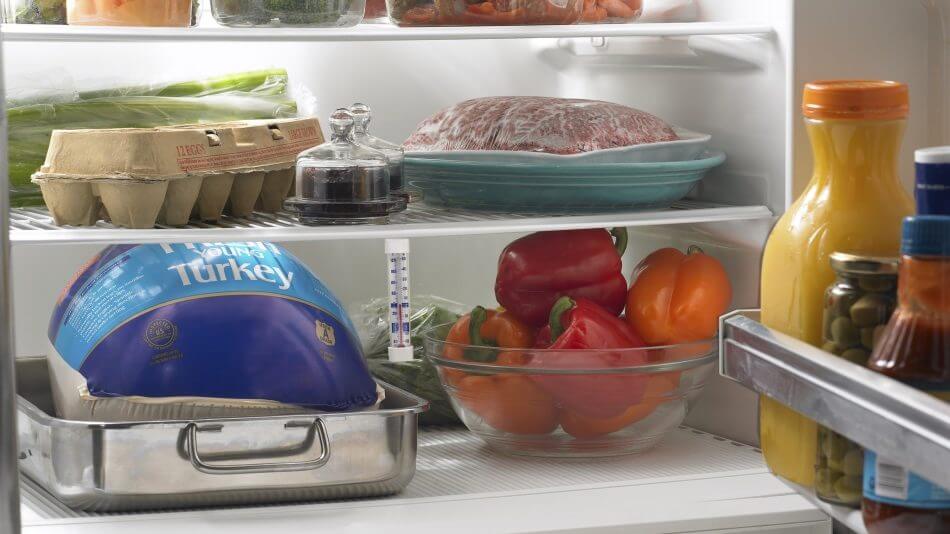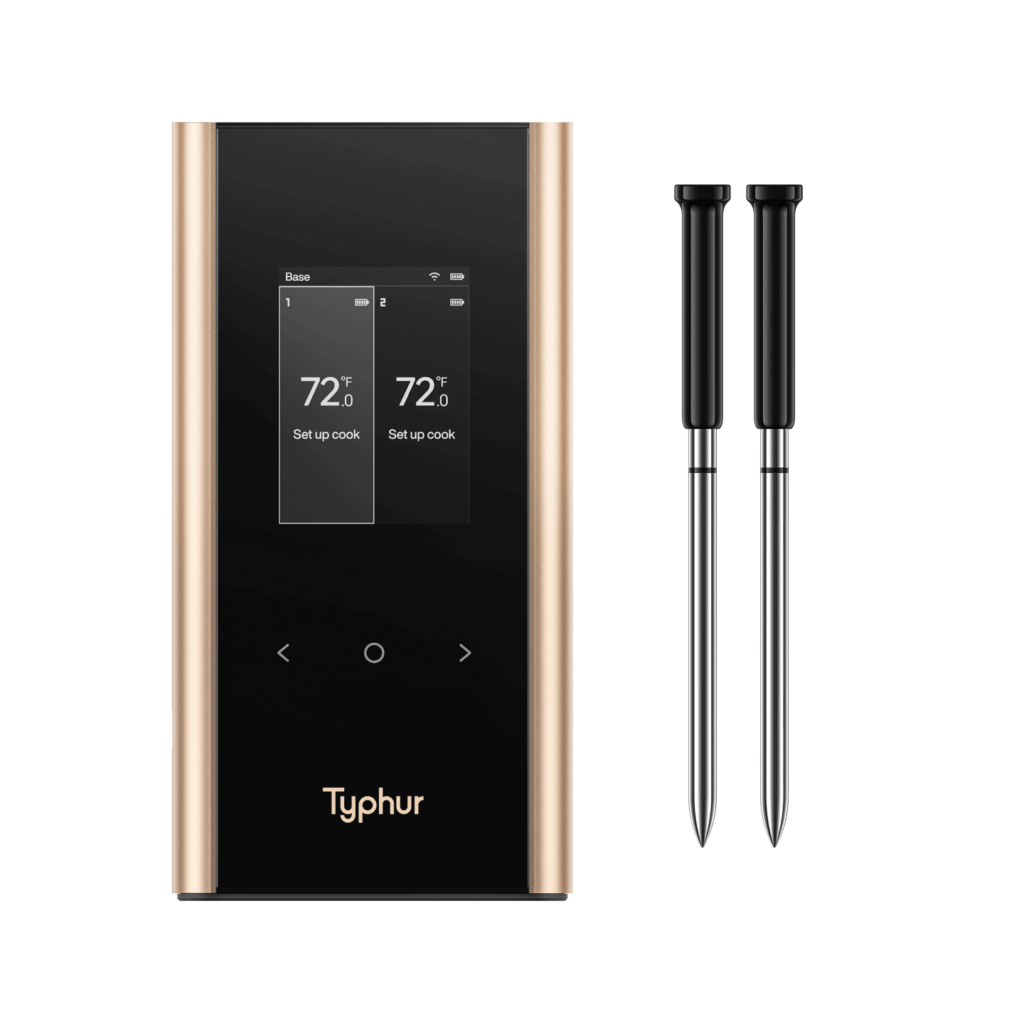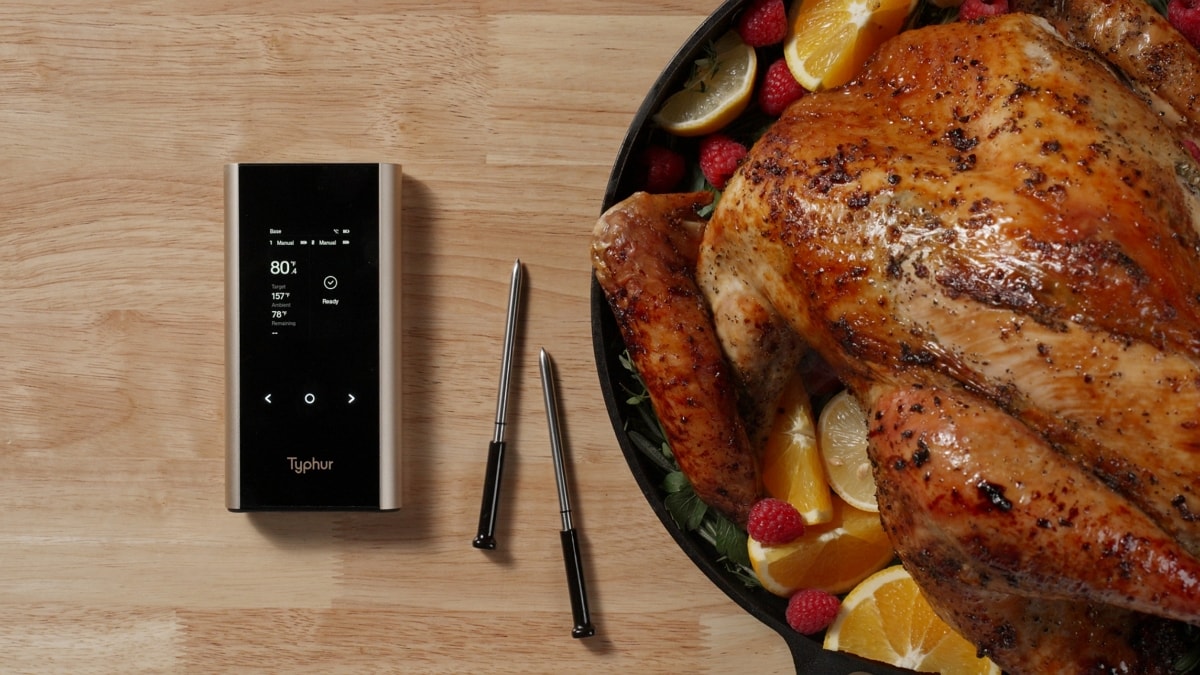When planning ahead for Thanksgiving dinner gatherings, frozen turkeys are a popular choice for many households, because a frozen turkey can be safely stored in the freezer for up to a year, and it is more cost-effective than fresh turkeys.
While frozen turkeys have many benefits, they do come with one significant requirement—thawing time. The thawing time depends on the turkey’s size and the thawing method:
| Thawing Method | Time Required | Best For | Description |
| Thawing in the Refrigerator | 24 hours for every 5-6 lbs | Planning ahead | The safest method, takes the longest time, can be refrozen |
| Thawing in Cold Water | 30 minutes per pound | Those needing a quick thaw within hours | Faster than fridge thawing, but needs regular water changes and monitoring, cannot be refrozen |
| Thawing in the Microwave | 6 minutes per pound | Small turkeys, last-minute emergencies | Fastest option, but limited by turkey size and potential for uneven thawing |
Table of contents
Thawing the Turkey in the Refrigerator
Thawing your turkey in the refrigerator is considered the safest and most reliable method, recommended by the USDA. It allows the turkey to thaw slowly at a controlled, safe temperature, minimizing the risk of bacterial growth. Although this method takes the longest, it’s also the least hands-on, making it ideal for those who plan ahead.

For every 5-6 pounds of turkey, you should allow about 24 hours of thawing time in the fridge. So, a 12-pound turkey would need around 2 days to thaw, while a 20-pound bird will take 4 full days. It’s best to clear a space in the fridge and place the turkey on a tray or in a pan to catch any drips, preventing potential cross-contamination. This method keeps the turkey well below 40°F (4°C), which is essential for preventing the growth of harmful bacteria.
Starting the thawing process early—perhaps on the Friday or Saturday before Thanksgiving—is crucial, especially for larger turkeys. While it requires some advance planning, this method ensures the turkey is completely thawed and ready to cook on schedule.
One key advantage of refrigerator thawing is that you can refreeze the turkey if your plans change unexpectedly.
Thawing the Turkey in Cold Water

If you’re short on time, thawing the turkey in cold water can be an effective alternative. Unlike refrigerator thawing, this method requires constant attention, but it’s significantly faster. You’ll need to allocate 30 minutes of thawing time per pound of turkey. This means a 12-pound turkey could thaw in about six hours, while a 20-pound turkey might take up to ten hours.
To use this method, place the turkey—still in its packaging—into a large container or sink filled with cold water. The key to safety here is keeping the water cold below 40°F (4°C).

Long Range Wireless Meat Thermometer
To do this, you can leave the Typhur Sync wireless probe in the water (it’s waterproof) and set the temperature to 40°F (4°C). You’ll receive an alert when the water reaches 40°F (4°C). At that point, add ice to keep the water below 40°F (4°C), ensuring the turkey stays in a safe temperature zone. Once fully thawed, cook the turkey immediately to maintain food safety.
Cold water thawing is ideal for those last-minute situations when you realize the turkey needs to be ready sooner than anticipated. However, it does require more involvement, as you’ll need to frequently check the water temperature and change it to keep the process going safely.
Thawing the Turkey in the Microwave
Thawing in the microwave is the fastest way to defrost a turkey, but it’s also the most challenging to manage correctly. It’s suitable mainly for smaller turkeys, as the size of the bird and the capacity of the microwave can be limiting factors. This method is best for emergency situations, like discovering the night before that your turkey is still frozen.
To thaw a turkey in the microwave, you should refer to your microwave’s manual to determine the exact settings based on its wattage. As a general guideline, use 50% power and allow about 6 minutes per pound. Be sure to remove the turkey from its packaging and place it in a microwave-safe dish. You’ll need to rotate and reposition the turkey periodically to ensure even thawing, as microwaves can cause hot spots or even partial cooking.
Once the turkey is thawed, it must be cooked immediately. This is because microwaves can cause some parts of the turkey to start cooking, making it unsafe to let it sit for extended periods before fully cooking.
No Thawing
While this method isn’t ideal and takes considerably longer, it’s a safe alternative if you find yourself in a bind with no time left for thawing. Cooking a frozen turkey can take up to 50% longer than cooking a thawed one, so be prepared for an extended cooking time.
For example, a 12-pound turkey that typically takes about three hours to roast when thawed will take closer to 4.5 hours when cooked from frozen. Be sure to monitor the internal temperature using the Typhur wireless meat thermometers, and pull it out when the temperature reaches 157°F (69°C) for moist, juicy turkey.
Related:
Thanksgiving turkey temperature guide
Where to put a thermometer in a turkey
How to cook a turkey
While this method can be a lifesaver in last-minute situations, it’s generally better to plan ahead and use one of the other thawing methods if possible.
DO NOT Thawing at Room Temperature
One crucial safety rule when thawing a turkey is never to thaw it at room temperature. Leaving a turkey out on the counter to thaw can cause its outer layers to reach unsafe temperatures while the interior remains frozen. This creates an environment where bacteria can grow rapidly, increasing the risk of foodborne illness.
Room temperature thawing is considered unsafe because the turkey’s outer layers can easily exceed 40°F (4°C) while the core remains frozen. This “danger zone” for bacterial growth can make the turkey hazardous to eat. Always stick to one of the safe thawing methods mentioned above to ensure your meal is both delicious and safe for everyone to enjoy.
How Do You Know When a Turkey Is Thawed?
If you don’t thaw your turkey properly, it won’t cook evenly, which can lead to dry, overcooked spots or, even worse, undercooked bits that aren’t safe to eat.
To check if your turkey is fully thawed, insert the Typhur InstaProbe instant-read thermometer through the wrapper and deep into the breast in several spots. The temperature should read between 30°F (-1.1°C) and 40°F (4.4°C).
FAQs
Yes, but only if it was thawed in the fridge. Refreezing can affect texture and flavor, though.
It’s best to wait until the turkey is fully thawed for even seasoning.
You can cook it from frozen—just expect a longer cooking time.
Wrapping It Up
Thawing a turkey doesn’t have to be stressful. Whether you’ve got days to spare or just a few hours, there’s always a way to get that bird ready. The key is knowing your options and planning ahead. So, take a deep breath, grab a cup of coffee, and you’ll be one step closer to that perfect Thanksgiving feast!




